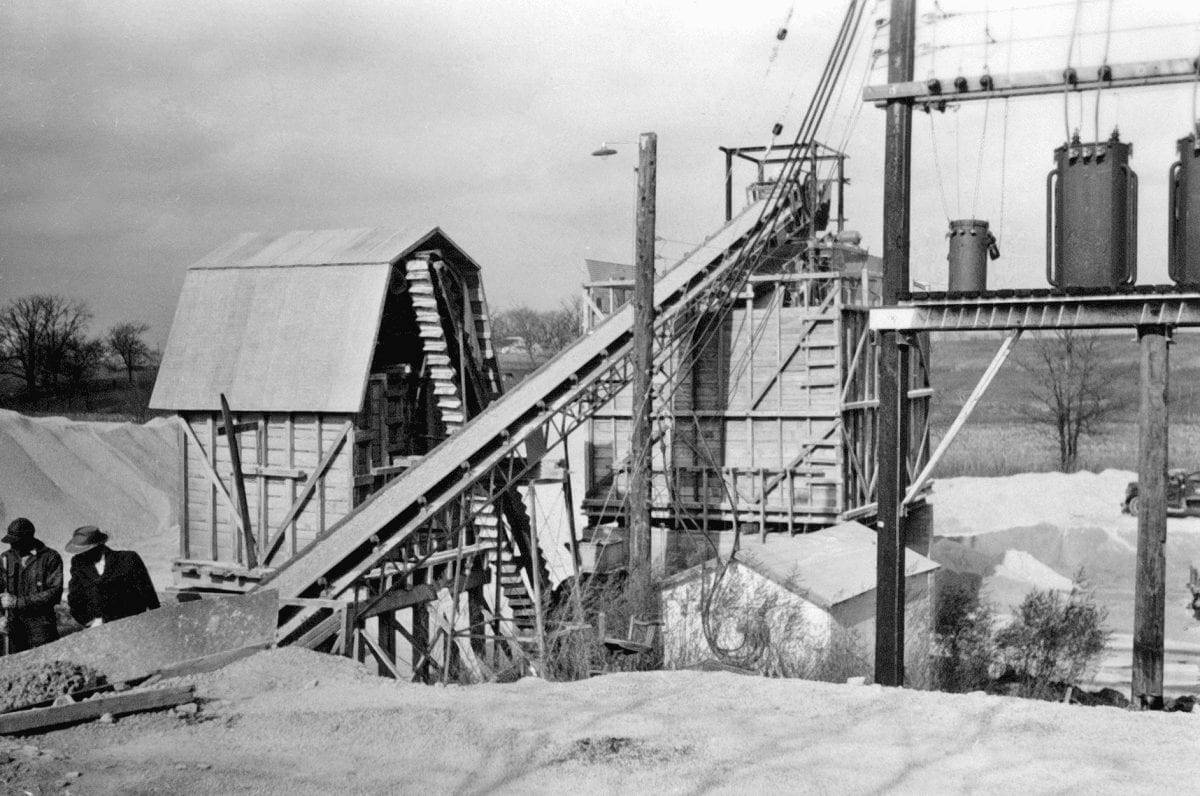Let’s Take Look at Concrete History: Then and Now
Different forms of concrete have been used for thousands of years, including by the ancient Egyptians to build the pyramids and by the Romans to build the Colosseum. However, most major advancements in the concrete and aggregates industry have occurred within the last 70 years as the world began to urbanize. You can trust that Shelby Materials is always on the cutting edge of technology within the industry, and our history shows just how we got here! Let’s take a look at concrete history: then and now.
1950s: Rebuilding from the War
A focus on road stone came from National Agricultural Limestone Institute with the Federal Highway Act of 1956, which funded the construction of a 41,000-mile interstate highway to help rebuild the economy. Impact crushers were introduced in the ‘50s, with the initial design developed by Dr. Ehrhardt Andreas of Germany. The ‘50s also saw the launch of Shelby Gravel by John D. Haehl Sr. and his brother-in-law Thomas J. Wheeler, after getting their start with the Cave Stone Company in 1946.
1960s: Trade Show Changes
In 1963, Assembly Hall was built at the University of Illinois, known for being the first domed concrete sports arena. In 1968, the first Con/Agg trade show was hosted by the National Crushed Stone Association, the National Ready Mixed Concrete Association and the National Sand and Gravel Association, changing the face of trade events for the industry. In 1967, Shelby was awarded their first major infrastructure contract in Shelbyville.
1970s: New Decorative Techniques
The 1970s saw a shift toward decorative concrete, including Brad Bowman’s patents with the Bomanite Corp. and a fresh concrete urethane stamp developed by Jon Nasvik. This decade brought the second family generation to Shelby Gravel, as well as the purchase of their first front discharge truck.
1980s: Advanced Technology
As was the case across industries, the 1980s brought huge technological advancements, including computer production for gravel pits and quarries. Shelby’s first computer batching came in 1985. The mid-’80s also saw the first concrete countertops from Buddy Rhodes and Fu-Tung Cheng.
1990s: Environmentalism
Across the globe, countries became more aware of environmentalism in the ‘90s. This was apparent in the concrete and aggregates industry too as producers began to create reclamation plans to save land and cut NOx emissions after the Clean Air Act of 1990. In 1997, Shelby Gravel Inc. officially became Shelby Materials. In 1999, concrete polished floors were developed and the first installation in the U.S. was at the Bellagio in Las Vegas.
21st Century and Beyond
In 2000, Home Depot was the first major company to install polished concrete floors. Today, big-box chains and residential homes alike utilize polished concrete, and modern techniques can now look like granite, marble, wood, tile and more. The 21st century also brought more new technology to the concrete and aggregates industry, including drones to measure stockpiles. From 2010 to 2012, Shelby overhauled its concrete batching and dispatching systems to improve efficiency and deliver info to customers in real time.
As you can see, Shelby Materials has continued to innovate within the industry to provide the best quality product to our customers. You can always trust our mantra: “We just don’t deliver concrete, we deliver value.” If you are in need of a concrete or aggregates project for your home or business, contact our office today. We look forward to working with you!
Sources:




